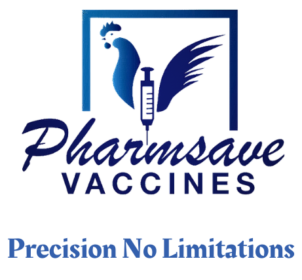Coccidiosis is caused by single-celled parasites of the genus Eimeria. In chickens, there are 9 species. The five most important species are:
- E. acervulina,
- E. maxima,
- E. tenella,
- E. necatrix and
- E. brunetti.
Other species can be highly pathogenic (E. mivati) but are less ubiquitous.
Transmission
Feces containing sporulated Eimeria oocysts are the main means of transmission between birds. The incubation period from ingestion to shedding of new oocysts is 4 to 7 days. Clinical signs, such as weight loss, may appear as early as 4-days post-ingestion of infectious oocysts, but bloody droppings from E. tenella infection usually occur at 6 to 7 days post infection.
Clinical signs
Clinical signs vary by the species infecting the flock. Some species, such as E. acervulina and E. maxima have a severe negative effect on weight gain and feed conversion, particularly
E. maxima; these species do not cause obvious morbidity unless infection is moderately severe. Mortality in field cases of these species is rare, unless complicated by secondary infection with Clostridium perfringens (necrotic enteritis). Other species such as E.tenella, E.necatrix and E.brunetti can induce sick and listless birds in combination with high mortality.
Diagnosis
Diagnosis is based on clinical signs and post-mortem examination, including mucosal scrapings of affected birds.
E. acervulina is characterized by white spots on the mucosal surface of the duodenum and upper middle intestine. These gross lesions can be scored according to methods described by Johnson and Reid (1970 Exp Parasitol 28:30 – 36).
E. maxima is not easily characterized by gross lesions, although red petechiae on the serosal surface of the middle intestine can sometimes be seen. Proper diagnosis requires microscopic examination of scrapings taken from the mucosa of the middle intestine. Microscopic scoring systems for both E. maxima and E. acervulina have been described by Fitz-Coy in Diseases of Poultry 12th ed. (p. 1070)
E. tenella, E. necatrix and E. brunetti can cause significant morbidity and mortality, characterized by bloody droppings. Hemorrhages of the cecal mucosa, or blood-filled ceca indicate E. tenella; with definitive diagnosis made by mucosal scrapings that may reveal both asexual stages and oocysts.
Significant swelling of the middle intestine with both tiny white spots and petechiae on the serosal surface (“salt and pepper”) indicate E. necatrix. E. necatrix is further distinguished by the fact that it tends to affect flocks over 6 weeks of age, although high challenge areas may result in clinical infections before 5 weeks of age.
Mucosal scrapings of the middle intestine will reveal only asexual stages (extremely large schizonts), while the oocysts will be found in the ceca. E. brunetti causes redness and hemorrhage in the colon, neck of the cecum and rectum, but lesions are not diagnostic. Like E. maxima, mucosal scrapings should be viewed microscopically.
Treatment and prevention
Anticoccidial chemicals effectively suppress sensitive Eimeria spp. populations, but complete resistance to these drugs develops very quickly sometimes during a single broiler flock cycle. Therefore, most coccidiosis control programs do not rely on chemical anticoccidials. Chemicals, particularly in liquid preparations, are largely used for treatment of clinical outbreaks.
Most effective coccidiosis prevention and control programs depend upon flock immunity.
One method to develop controlled immunity is via feed medication with ionophore antibiotics. The ionophores reduce coccidiosis multiplication, allowing natural immunity to develop while preventing clinical outbreaks.
Over time, the Eimeria field populations become less sensitive to these medications, resulting in subclinical coccidiosis or even clinical outbreaks before complete immunity can develop.
To slow the loss of sensitivity, broiler producers employ shuttle medication programs (a chemical in the starter feed followed by an ionophore in the remaining feeds) and rotational programs (changing the feed medications to slow the loss of sensitivity to a single medication). This strategy was most effective when new medications were periodically introduced. Unfortunately, since the year 2000, no new medications have been introduced to the market and sensitivity to all existing medications has declined.
Another method to develop controlled immunity is coccidiosis vaccination with live attenuated or natural selected strain sporulated oocyst vaccines. Vaccination is already used almost exclusively for coccidiosis control in long-life birds such as breeding and egg-laying populations.
Routine vaccination of broilers against coccidiosis is increasing and may eventually replace controlled immunity via feed medication.
Check out the Vaccination schedule – Click Here
Recommended Vaccines for coccidiosis
- Fortegra®
- Paracox®-5
- Paracox®-8

